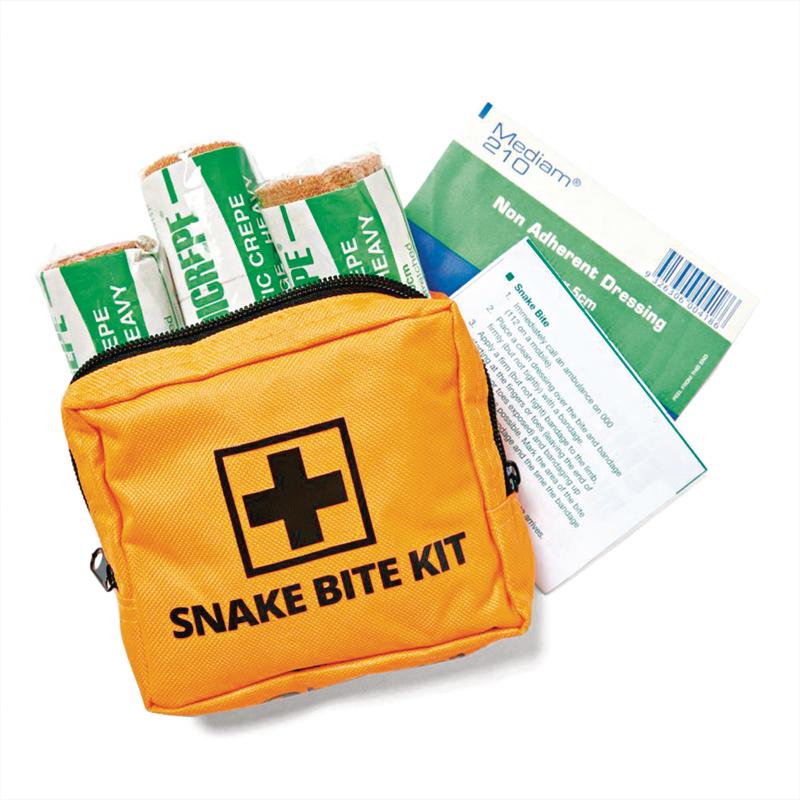AT the NSW Farmers’ annual conference I raised a motion, which was passed, for the Association to lobby state and federal governments to mandate sufficient stocks of snake antivenom be available in rural areas of Australia.
The reason I’ve become so interested in this is I found out hospitals in some areas weren’t stocking antivenom and, as a farmer from Tenterfield in the Northern Tablelands, I’m concerned people on farms and in regional areas may not be able to rely on hospitals to provide the care they need.
When I first heard about this, I found out my local hospital does stock snake antivenom – two doses for brown snake and two for tiger snake. But I’ve heard that this is not the case for all hospitals.
A couple of years ago, a man presented to hospital in Tenterfield with a snakebite and was given antivenom, but he required a second dose and then, when the air ambulance came, he was given a third dose. So all of the stocks were immediately used in one town.
“When I raised the motion at the conference, a farmer from Walgett said one of his employees was bitten by a snake but the local hospital didn’t have antivenom and the next closest hospital didn’t have any either,” Bronwyn Petrie says.
“When I raised the motion at the conference, a farmer from Walgett said one of his employees was bitten by a snake but the local hospital didn’t have antivenom and the next closest hospital didn’t have any either,” Bronwyn Petrie says. He ended up in Dubbo, but there was no-one there who could do the pathology to see what antivenom he needed. Clearly this is an issue.
Earlier this year, I heard the story about a man who was killed by a brown snake in Tamworth while trying to protect his dog. After that, my local vet told me that not all hospitals were stocking antivenom. I then read an article quoting the head of the Australian Venom Research Unit (AVRU), David Williams, who said he was surprised rural hospitals weren’t stocking antivenom because they were more likely to treat snakebite victims than city hospitals.
Snake bite hospitalisation
An AVRU national study into venomous creatures finds snakebites caused more than 6,000 hospitalisations in Australia between 2001 and 2013, while another study reports there were 35 snakebite fatalities between 2000 and 2016.
It’s incredibly important in rural and regional areas to have stocks of antivenom on hand, not just for farmers and rural workers, but also for visitors. We are encouraging people to come out to our rural areas and to our national parks, so the last thing we need is for medical institutions to be complacent about snakes.
“We are encouraging people to come out to our rural areas and to our national parks, so the last thing we need is for medical institutions to be complacent about snakes.”
In what appears to be payback from the snake community, just over a week after raising the motion at the conference, I was bitten by a snake while out fencing. At the time I thought it was a vicious ant as it struck me from behind and above my knee. I got sick, my leg swelled up and I couldn’t bend it. I later found fang marks on my leg and in my jeans and we believe it was a brown snake. Fortunately, the venom mostly went into my jeans or it was a dry bite.
 Tenterfield farmer Bronwyn Petrie, who has brown snakes on her farm. Photo: David Hahn.
Tenterfield farmer Bronwyn Petrie, who has brown snakes on her farm. Photo: David Hahn.
Why rural hospitals don’t stock antivenom
I’ve heard one of the reasons why some hospitals don’t stock antivenom is because of the cost – $1,500 to $2,000 for a single dose – but given the cost of some of the other drugs they stock, the tyranny of distance and the number of people working outside, I don’t think this should be a deterrent. How terrible would it be for someone to die of a snakebite because they didn’t have access to antivenom. If the cost is so prohibitive, then perhaps the federal government needs to subsidise it.
Antivenom has a use-by date of as little as one year, but surely when it is getting to the end of its shelf-life, hospitals could rotate stocks to an area where more people present with snakebites. There’s also been discussion around the fact hospitals are relying on first aid and passing patients on to bigger hospitals. But it’s not 15 minutes to a big hospital for most people in rural areas and often by the time a person gets to hospital, the antivenom is critical.
Vets think it is important enough to stock antivenom, so why not hospitals? Obviously, some hospitals stock it and think it’s vital, so why don’t they all?
 A snake bite kit will include bandages, dressings and a bite guide amongst other things. Photo: Shot At Close Range Photography.
A snake bite kit will include bandages, dressings and a bite guide amongst other things. Photo: Shot At Close Range Photography.
NSW Health snakebite clinical management guidelines
- Determination of antivenom stock requirements is best done at a regional level, based on a review of risks, facilities, past use and considerations such as location, degree of isolation, local snake distribution, history of snakebite cases and the referral role of hospitals.
- NSW Health recommends all NSW hospitals should at least have one vial of brown snake antivenom and one vial of tiger snake antivenom. One vial of polyvalent antivenom, used when a snake can’t be identified, should be kept in larger regional and referral hospitals, and retrieval services (air ambulance).
- For small country hospitals with limited resources and no on-site laboratory testing, the decision to stock any antivenom must be based on distance to a well-equipped hospital and local resources.
READ MORE - ‘On My Soapbox’
-
Fruit growers should focus on quality
-
Putting a price on conservation
- Putting a price
on conservation
-
Drought stories of success, not charity
-
Oyster theft no small issue for farmers
*These are Bronwyn’s personal views. If you would like to be ‘On my soapbox’ in a future issue of The Farmer, email: thefarmer mediumrarecontent.com or write to: The Farmer, Suite 53/26-32 Pirrama Rd, Pyrmont, NSW 2009. If your topic is chosen, a journalist will be in touch.